Click here to subscribe and get instant access to read this report.
Click here to check your existing subscription status.
Existing members, login below:
Click here to subscribe and get instant access to read this report.
Click here to check your existing subscription status.
Existing members, login below:
“Rats exposed to even the smallest amounts of Roundup and NK603 Roundup-tolerant corn developed mammary tumors and severe liver and kidney damage.”
- Prof. Gilles-Eric Seralini, Ph.D., Universite de Caen, France


Reprint October 13, 2013 - September 27, 2012 Oakland, California - According to the U. S. Department of Agriculture's Economic Research Service, in 2011 the percent of corn crops in America that contain some form of genetic engineering is 96% . Most of that genetic engineering is Monsanto's Roundup-resistant corn in which the Roundup NK603 herbicide is built into the plant.
Click here to subscribe and get instant access to read this report.
Click here to check your existing subscription status.
Existing members, login below:
“The expectations of most solar astronomers is that if we do go
into a Maunder Minimum (type event), it might momentarily slow
the warming of Earth, but it’s not going to make a little ice age.”
- David Hathaway, NASA Solar Physicist, Huntsville, Alabama
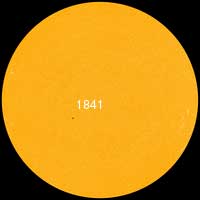
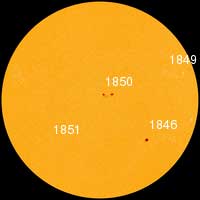
September 27, 2013 Huntsville, Alabama - Two years ago in the third week of October 2011, solar physicists gathered in Sunspot, New Mexico, for a workshop to figure out what is happening in our sun. At the time, the sun had gone nearly three years without sunspots leading into current Solar Cycle 24. Solar physicists were asking if the sun is winding down into what is called a Grand Minimum where for the next several decades the sun would not have sunspots.
Click here to subscribe and get instant access to read this report.
Click here to check your existing subscription status.
Existing members, login below:
“Whoever made the crop patterns has the knowledge to conceive original theorems that haven't been stated before.”
- Gerald Hawkins, Ph.D., Astronomer and Mathematician
Return to Part 1
July 27, 2013 Albuquerque, New Mexico - When I was producing my second book, Glimpses of Other Realities, Vol. I: Facts & Eyewitnesses © 1993 (see Earthfiles Shop), I met and worked with astronomer and mathematician Gerald Hawkins, who had studied the astronomical alignments of ancient Stonehenge in southern England and written the book, Stonehenge Decoded © 1965, with John B. White.
During the 1990s, some crop formations in England were identified as containing mathematical relationships such as diatonic ratios, geometry theorems and fractals. The diatonic ratios intrigued Gerald Hawkins, who shared his research with me for my book. In this Earthfiles, I am sharing pages 53 - 59 and Appendices 1 through 3 from my original 1993 book.
Click here to subscribe and get instant access to read this report.
Click here to check your existing subscription status.
Existing members, login below:
“Even if this comet survives passage (of the sun), which is by no means guaranteed because it's getting within 1/10th of a solar radii of the sun, it can be split up into many small pieces, which themselves could evaporate away. ...We really don't know.”
- Karl Hibbits, Ph.D., John Hopkins Applied Physics Laboratory
July 26, 2013 - Long before any human knew about it, a half-mile-diameter clump of ice and rock far beyond Pluto began to move from its position in the primordial, cold Oort cloud that surrounds our solar system. Perturbed to move toward the sun's gravitational pull, the rough ball of ice for the first time headed into the solar system.
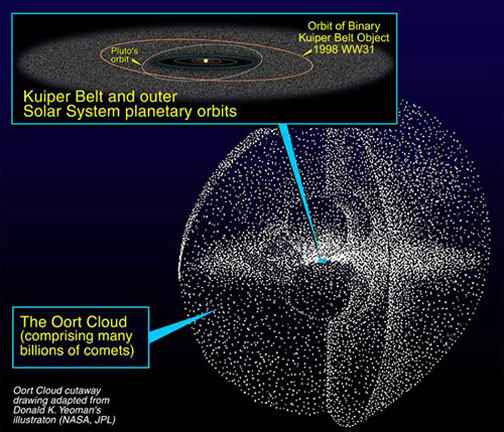
Click here to subscribe and get instant access to read this report.
Click here to check your existing subscription status.
Existing members, login below:
“The grid pattern (on Monaco Deep seafloor) is so deep that I doubt a modern civilization or Government built something down there - it would cost too much and why build at such a mile-deep crushing depth?”
- U. S. Intelligence Analyst
Updated: July 21, 2013 Albuquerque, New Mexico - Recently I received the following images and information that I am sharing at Earthfiles to see if anyone has other substantive information about the Monaco Deep grid mystery off the coast of Spain. Updated: Received answer on Kenya aerial image of circles from retired U. S. Navy Captain below.
Click here to subscribe and get instant access to read this report.
Click here to check your existing subscription status.
Existing members, login below:
“About 250 billion tons of ice per year has been lost from the Greenland ice sheet over the last five to ten years and that is accelerating as well. If these jet stream changes prevail, it is likely to accelerate further over the next few decades.”
- Edward Hanna, Ph.D., Prof. of Geography, U. K.'s Sheffield University
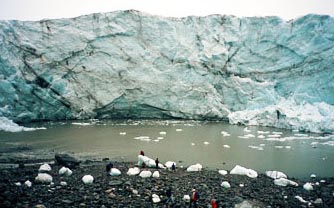
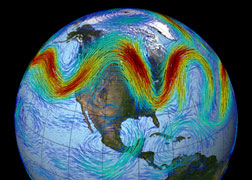
June 27, 2013 Sheffield, South Yorkshire, England - Back in the 1980s, scientists said the upper safety limit for atmospheric CO2 was 350 parts per million (ppm). But as early as 1988, atmospheric CO2 levels went higher than 350 ppm. So the next safety limit was set at 400 ppm.
We're there now! NOAA and the Scripps Institution of Oceanography website, CO2now.org, has a graphic summary of CO2 concentration increases in the Earth's atmosphere since May 2011. Then it was 394.29 parts per million (ppm). The next year in May 2012, it was 396.87 ppm. And then a month ago in May 2013, it was 399.89 ppm and climbing.
Click here to subscribe and get instant access to read this report.
Click here to check your existing subscription status.
Existing members, login below:
“What was so important to these early people that they gathered to build (and bury) the stone rings? The gulf that separates us from Gobekli Tepe's builders is almost unimaginable.”
- Smithsonian Reporter Andrew Curry
“If you start looking into the religious ideas of cultures and indigenous civilizations, you'll find that the star Deneb, Cygnus constellation, in the Milky Way's Dark Rift was seen as a point of entry and exit into the sky world. It was seen as this is where the souls came from and this is where the souls return to in death.”
- Andrew Collins, Author, The Cygnus Mystery © 2006/2007
March 29, 2013 Gobekli Tepe 8 miles northeast of Sanliurfa, Turkey-
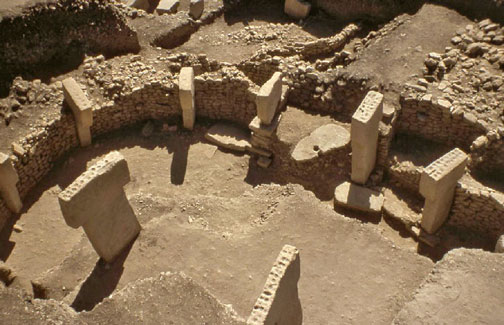
Click here to subscribe and get instant access to read this report.
Click here to check your existing subscription status.
Existing members, login below:
“Gobekli Tepe is a place of death; a place of re-birth. ... people who would enter into those enclosures ... and stand in between those two monoliths ... would quite literally be then projected out into the sky.”
- Andrew Collins, Author, The Cygnus Mystery
Return to Part 1.
March 29, 2013 Gobekli Tepe 8 miles northeast of Sanliurfa, Turkey - Even though Gobekli Tepe is carbon dated to 12,000 years ago, there is one excavated stone pillar that has what looks like a bird with outstretched wings and a circular object that provokes comparison to the shen symbol of Egypt seven thousand years later.
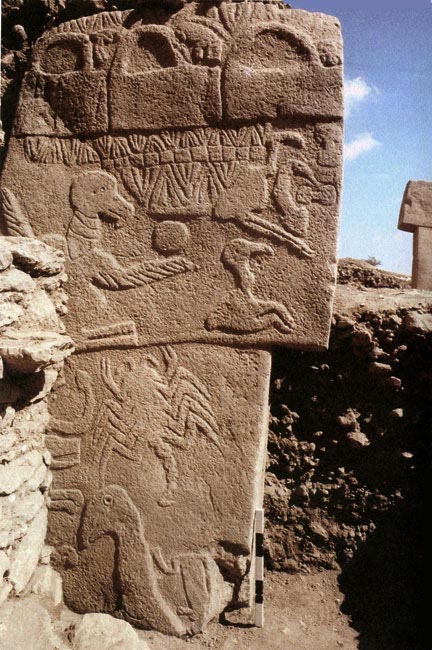
Click here to subscribe and get instant access to read this report.
Click here to check your existing subscription status.
Existing members, login below:
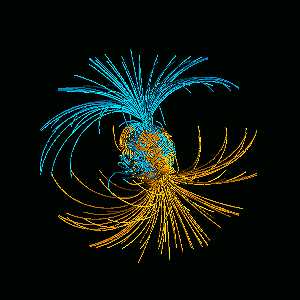
March 10, 2003 Cambridge, Massachusetts - Four thousand miles down below our planet's surface is the center of the earth's iron core, depicted as brown in the illustration below. There is so much pressure there that the iron is hard from the center outward for about 746 miles (1200 km). But then it begins to melt and flow like porridge cooking in the yellow area that pushes upward as orange magma. That moving, melted iron also produces the magnetic fields that surround the earth and upon which much of earth's surface life, satellites and space technology depend upon for orientation and for protection. If magnetic fields did not trap highly energetic particles racing from the sun, all kinds of damage could be done to living organisms and space technologies.
Click here to subscribe and get instant access to read this report.
Click here to check your existing subscription status.
Existing members, login below:

